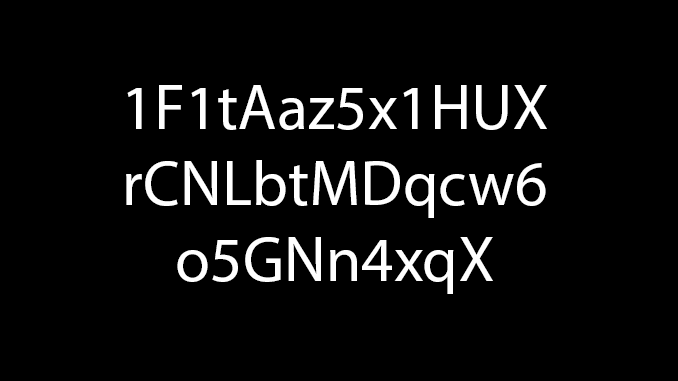
Whoever holds Bitcoin (BTC) and wants to send or receive requires a Bitcoin address. You can find out here which different formats are available and what else you should know about Bitcoin addresses.
In the world of Bitcoin (BTC), there are no account numbers like with classic bank accounts, but Bitcoin addresses instead. They are intended to serve as a node with the block chain. A Bitcoin address can therefore initiate a transfer of BTC and must also be specified if BTC is to be received. In combination with a wallet, the digital purse, BTCs are also stored under Bitcoin addresses.
A Bitcoin address consists of its public part, the Public Key, and the Private Key as password to access the Bitcoin address. They are generated by a cryptographic process, such as wallets or Bitcoin clients. The public and private keys of a Bitcoin address are uniquely linked by an algorithm, so the public key can be calculated from a private key as the actual Bitcoin address at any time. Of course, this does not work the other way around, because then the private key would not fulfill its function as a complex password.
In the early days of Bitcoin, IP addresses were often used to send and receive BTC. But this method proved to be vulnerable to hacker attacks (man-in-the-middle attacks). In the meantime, three formats have established themselves as Bitcoin addresses, which are normally compatible with each other.
P2PKH as Bitcoin address
P2PKH stands for Pay-to-Pubkey Hash. Bitcoin addresses in the P2PKH format have been integrated into the network since the launch of Bitcoin and consist of 26 to 35 digits made up of numbers and upper and lower case letters in a unique order. P2PKH Bitcoin addresses always start with a 1, and their different lengths result from the fact that addresses with many zeros can be shortened. To this day, Bitcoin addresses are the most widely used format as P2PKH and are basically supported by all wallets and crypto exchanges.
P2SH as BTC address
P2SH is the abbreviation for pay to script hash. The format allows some functions more than P2PKH, including in particular the use with segwit. Bitcoin addresses in P2SH format look exactly like those in P2PKH, except that they start with 3 instead of 1. It is easy to exchange Bitcoin addresses between P2SH and P2PKH. P2SH is also supported by the leading wallets and crypto exchanges. In practice, P2SH often uses the feature of multi-signature as a Bitcoin address. Then multiple digital signatures are required to order transfers.
Bech32 as Bitcoin address
Bech32 Bitcoin addresses are those that are generated natively in the segwit network. Segwit has been integrated into the Bitcoin block chain as an optional update since 2017 and makes it possible to handle some transactions more than usual per block. This usually results in slightly lower Bitcoin transaction fees. Bech32 Bitcoin addresses start with bc1 and are therefore slightly longer than addresses in P2PKH or P2SH format. Bech32 is slowly gaining popularity, but still only about 3 percent of all BTC balances are stored at Bech32 Bitcoin addresses, as recent data shows. Not all crypto exchanges support Bech32 Bitcoin addresses, but almost all wallets are prepared for use with Bech32.
Be careful with BTC addresses
If you use BTC, you should generate new Bitcoin addresses every time you use it. This ensures that other senders or receivers cannot even try to crack your Bitcoin address. Never forget that: The private keys of your Bitcoin addresses remain with you alone. If someone else knows them, they can also access your BTC credits and steal them.
Conclusion: Bitcoin addresses – less complicated than it seems at first glance
Admittedly, the mostly more than 30-digit BTC dresses at first seem dauntingly long and complicated. But they are usually also mapped in a QR code and can then be inserted into the forms for transactions by simply scanning the QR code. For you, it usually does not matter which format is used for BTC addresses, because transfers from one format to another are automatically organized in the background. Important remains: Use hardware wallets like those from Ledger to keep your Bitcoin safe.
Best place to buy Bitcoin:

Leave a Reply